Guides
How to Grow and Care for Rue Herbs
Rue (Ruta graveolens), with its striking blue-green foliage and sunny yellow flowers, is a herb that not only adds beauty to your garden but also boasts a fascinating history of medicinal and culinary uses. Whether you’re a seasoned gardener or just getting started, rue is a perfect plant to include in your garden thanks to its hardy nature, lovely fragrance, and low-maintenance care.
In this comprehensive guide, we’ll take you through everything you need to know to grow and care for rue herbs in your garden successfully. From planting tips to common problems, you’ll soon be enjoying this herb year-round with ease.
What is Rue Herb?
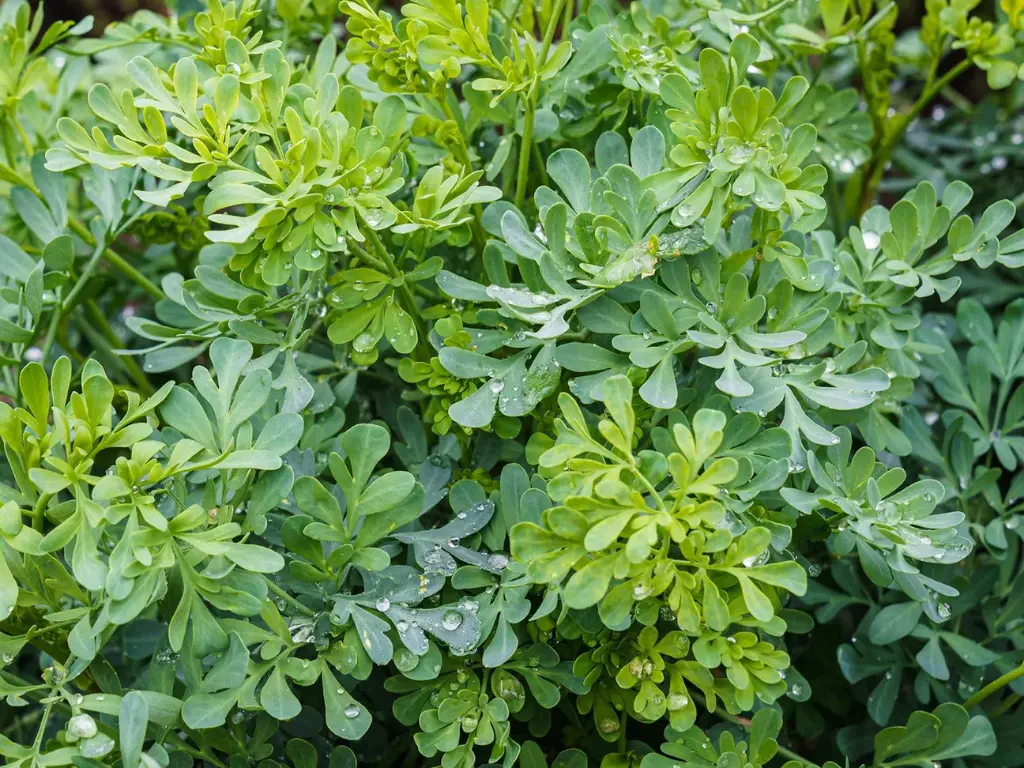
Rue is a perennial herb that has been valued for centuries, both for its medicinal properties and its ornamental beauty. Its aromatic leaves are highly fragrant and can be somewhat pungent, so it’s often used sparingly. Rue blooms in summer, producing small, bright yellow flowers that attract pollinators like bees and butterflies, making it not only a functional plant but an attractive one, too.
Originally from Europe and parts of Asia, rue is known for its resilience in poor soil conditions and its ability to withstand harsh climates. Despite its tough nature, rue is a beautiful addition to any garden, giving your landscape a Mediterranean feel. Its delicate, fern-like leaves and yellow blooms provide a charming contrast to other garden plants.
Why Should You Grow Rue Herb?
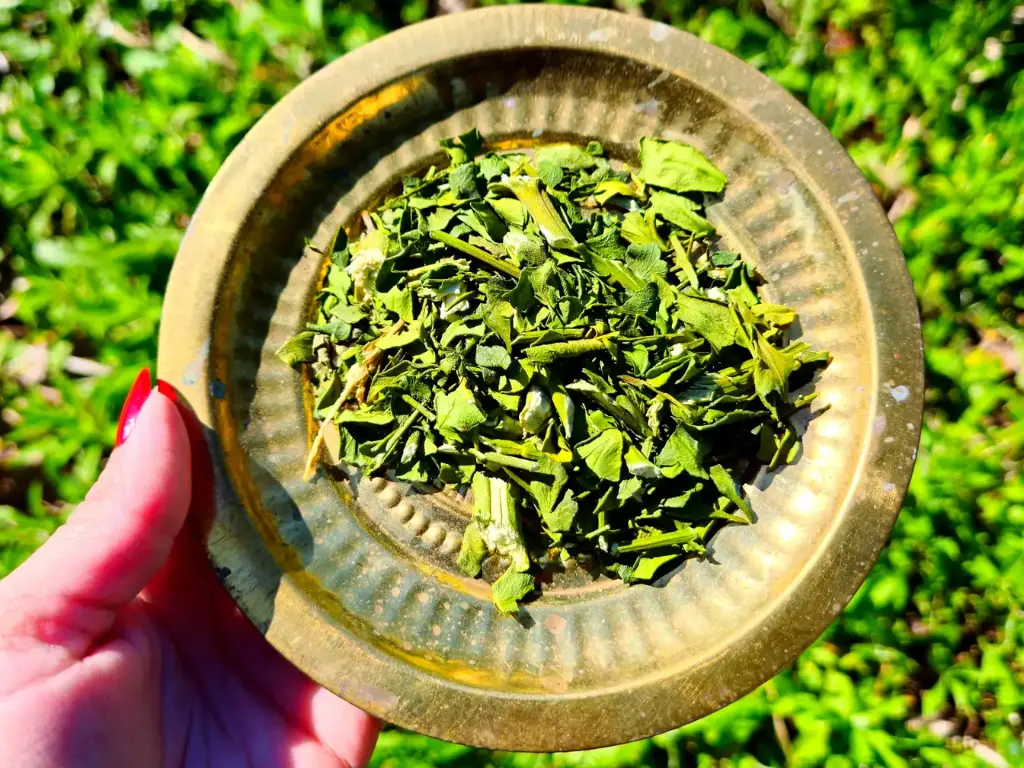
If you’re considering adding rue to your garden, here are a few reasons why this herb might be the perfect fit:
-
Low Maintenance: Rue is a hardy plant that thrives in various conditions and requires minimal attention once established.
-
Medicinal Uses: Rue has a long history in herbal medicine, often used for digestive issues, headaches, and anxiety relief.
-
Aesthetic Appeal: With its soft, feathery leaves and bright yellow blooms, rue adds an elegant touch to your garden, making it a great ornamental plant.
-
Repellent Properties: Rue is known to repel insects, particularly mosquitoes, making it a practical choice for outdoor spaces.
Read more: 9 Health Benefits of Rue: How to Make Rue Tea & Its Side Effects
How to Plant Rue Herbs
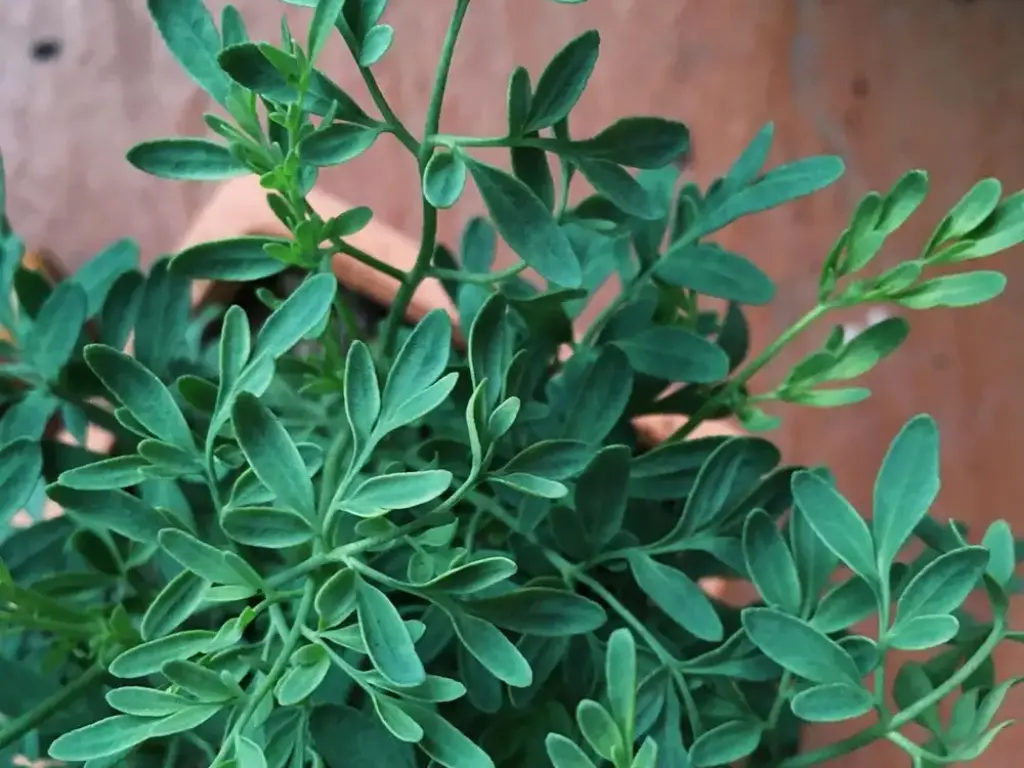
Best Time to Plant
The best time to plant rue is during the spring or early fall. These seasons offer the perfect weather for the plant to establish its roots before the temperature extremes of summer or winter hit. Here’s a breakdown of both options:
-
Spring Planting: Plant your rue after the last frost has passed, ideally when the soil has warmed up and the weather is beginning to warm. This allows the plant to get a solid start and grow steadily throughout the warmer months.
-
Fall Planting: Fall planting is also a great option. The milder fall temperatures give the plant time to develop roots before the cold of winter sets in. Just make sure to give it a bit of protection in the winter if necessary, and your rue will be ready to thrive the next spring.
Choosing the Right Location
Rue is a sun-loving herb and thrives in full sun, although it can tolerate some light shade. It prefers well-drained soil and will not do well in soggy conditions.
When choosing the perfect spot for rue, keep these tips in mind:
-
Soil: Rue grows best in dry, sandy, or rocky soil, and it thrives in slightly alkaline conditions. If your soil is too heavy, amend it with sand or gravel to improve drainage.
-
Drainage: Make sure the site has excellent drainage to prevent root rot. Rue is very sensitive to waterlogged soil.
-
Spacing: Rue can grow quite large, so space your plants at least 18 inches apart to allow them to spread out.
Preparing the Soil
Rue is relatively low-maintenance when it comes to soil, but for optimal growth, it’s important to ensure the soil is:
-
Well-drained: Rue dislikes wet, heavy soils.
-
Alkaline to neutral: Rue prefers soil with a pH of 6.0 to 8.0.
-
Slightly sandy or loamy: A well-draining soil mix ensures the plant’s roots won’t become waterlogged.
Planting Rue Herb
Once your soil is prepared and you’ve selected the ideal spot, it’s time to plant your rue. Here’s how to do it:
-
Spacing: Space your rue plants about 18-24 inches apart to give them plenty of room to grow.
-
Digging: Dig a hole that’s twice the size of the root ball of your plant.
-
Planting: Place the rue in the hole, making sure the top of the root ball is level with the surrounding soil. Fill in the hole with soil and press down gently.
-
Watering: Water your rue thoroughly after planting, but avoid soaking the soil. Rue prefers the soil to be slightly dry, so make sure to let it drain properly.
Caring for Rue Herbs Throughout the Seasons
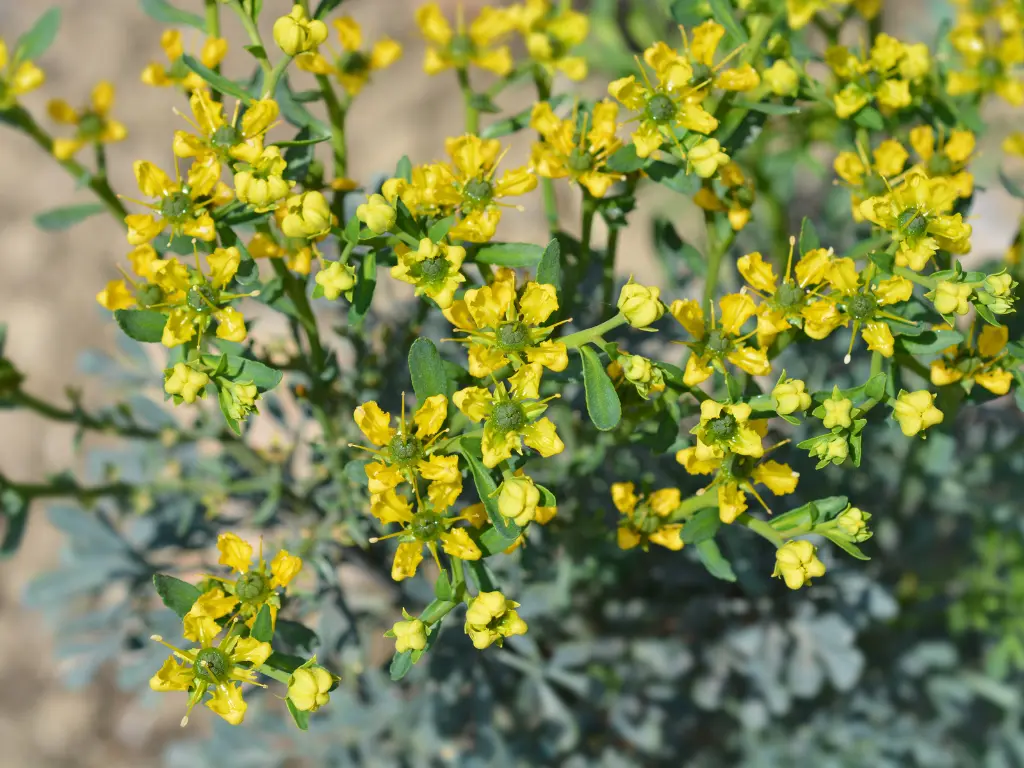
Rue is relatively low-maintenance, but it still needs a little attention to thrive. Here’s how to care for your rue throughout the year:
Spring and Summer Care
-
Watering: Rue is drought-tolerant once it’s established, but it will appreciate occasional deep watering during dry spells. Just make sure the soil has time to dry out between waterings.
-
Pruning: To keep your rue looking tidy and encourage new growth, trim back any dead or leggy stems in the spring. This also helps prevent the plant from becoming too woody.
-
Mulching: Adding a layer of mulch around the base of the plant will help retain moisture and suppress weeds. Just be sure not to pile it up too high around the stem to prevent rot.
Fall and Winter Care
-
Watering: As the weather cools, reduce the amount of water you provide. Rue doesn’t need much moisture in the fall and winter, and overwatering can lead to root rot.
-
Winter Protection: Rue is a hardy plant, but in colder regions, you may want to add a light layer of mulch around the base of the plant to protect the roots from freezing temperatures.
Common Problems and Solutions
Rue is generally pest-resistant and hardy, but occasionally, you may encounter a few issues. Here are some common problems and how to handle them:
-
Root Rot: If you notice yellowing leaves or wilting, your rue may have root rot, often caused by too much moisture. Ensure your plant has proper drainage and avoid overwatering.
-
Pests: While rue is largely pest-free, it can occasionally attract aphids or caterpillars. These can be removed manually or treated with an organic insecticide if necessary.
-
Yellowing Leaves: If your rue’s leaves turn yellow, it could be a sign of overwatering or acidic soil. Check your watering schedule and ensure the soil has a pH between 6.0 and 8.0.
How to Propagate Rue Herbs
Rue can be easily propagated by seed or cuttings.
-
From Seed: Rue can be grown from seeds. Start seeds indoors about 6-8 weeks before the last frost, then transplant the young plants outdoors once they are strong enough to handle the weather.
-
From Cuttings: In the spring or early summer, take a cutting of a healthy rue stem and root it in water or moist soil. Once the cutting has rooted, transplant it into your garden.
Final Thoughts
Rue is a fantastic herb for any garden, offering both beauty and practicality. With its easy care, resilience, and medicinal uses, rue can be a wonderful addition to your herb garden. By following the tips outlined in this guide, you’ll be able to grow and maintain rue with ease, ensuring it thrives year after year.
Frequently Asked Questions (FAQs)
How fast does rue grow?
Rue grows relatively slowly, taking a couple of years to reach its full size. However, once established, it will continue to grow steadily.
Can rue grow in the shade?
While rue can tolerate some partial shade, it thrives best in full sun and will produce more flowers when it receives plenty of sunlight.
How do I maintain rue in the winter?
Rue is quite hardy, but if you live in a region with harsh winters, consider mulching around the base of the plant to protect the roots from freezing.
Is rue toxic?
Yes, rue is toxic if ingested in large quantities, so it’s important to keep it out of reach of pets and children. Always handle rue with care, especially when harvesting.
Related Posts:

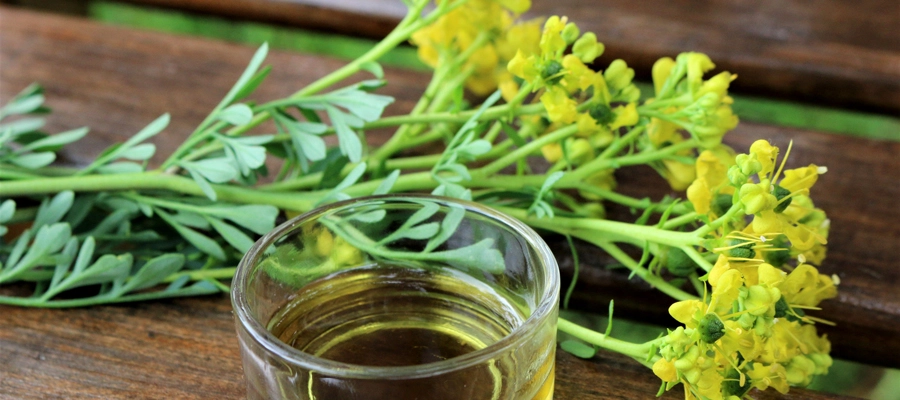
Swedish Ivy Care: How to Grow a Healthy, Thriving Plant
Have you ever looked at your Swedish Ivy and wondered why the leaves are turning [...]
Nov
Avoid These 10 Garlic Planting Mistakes for Bigger, Healthier Bulbs
Growing garlic at home is one of the most satisfying things a gardener can do [...]
Nov
How to Prevent Christmas Cactus Bud Drop: Tips for a Healthy Bloom
Have you ever noticed your beautiful Christmas cactus (Schlumbergera) starting to lose its buds just [...]
Nov
Discover 7 Stunning Types of Night-Blooming Cereus
Have you ever waited for a flower that only opens at night and then disappears [...]
Nov
How to Propagate Comfrey from Root Cuttings: Easy Guide for Beginners
If you’re looking to grow your own healthy comfrey plants without spending too much, propagating [...]
Nov
10 Best Christmas Plants to Gift This Holiday Season
The holiday season is finally upon us, and if you’re searching for the perfect gift [...]
Oct